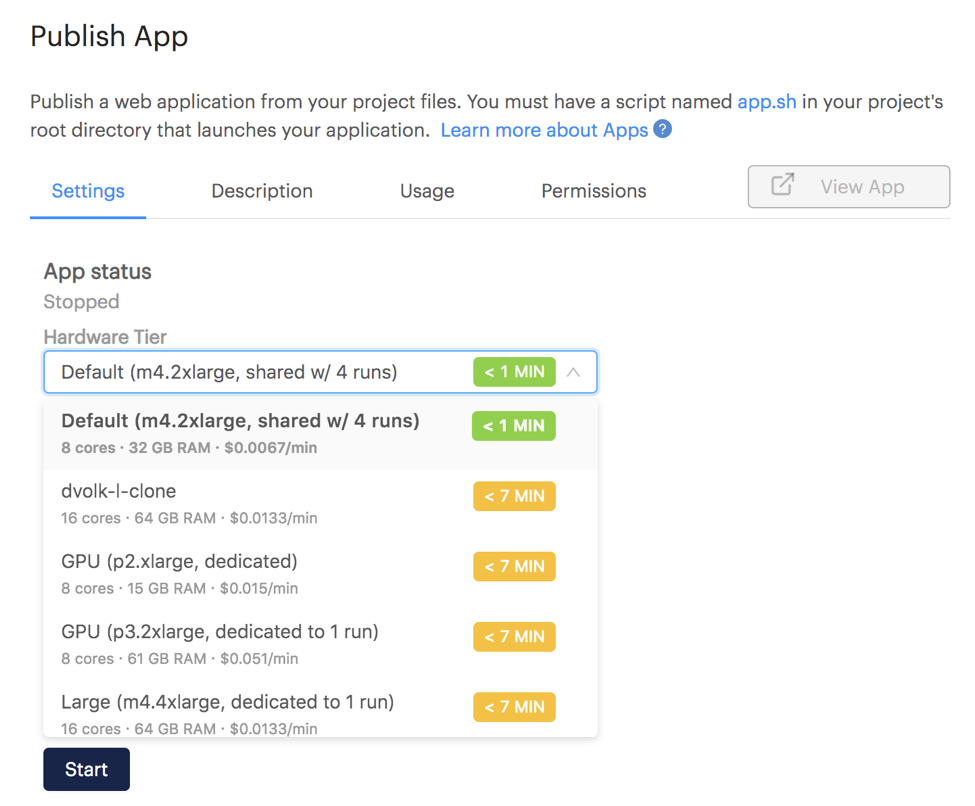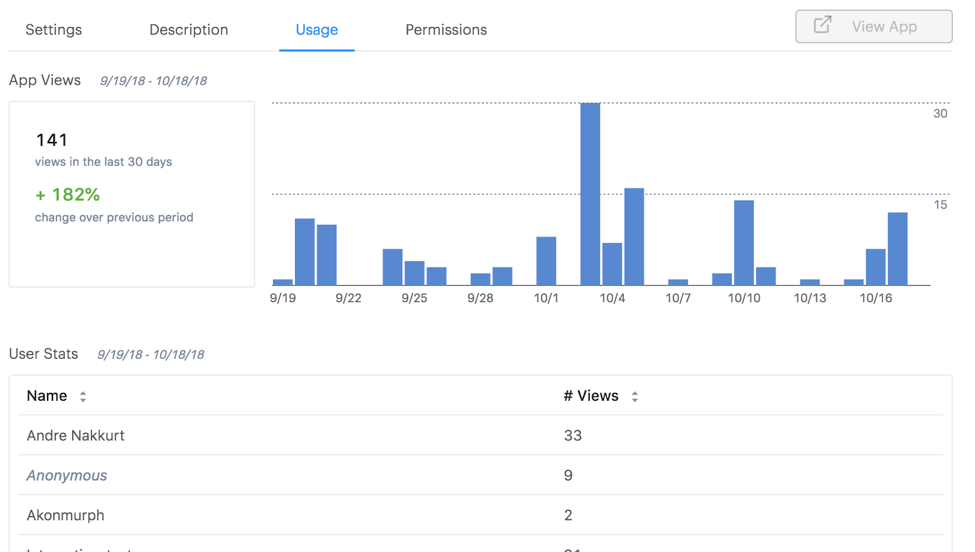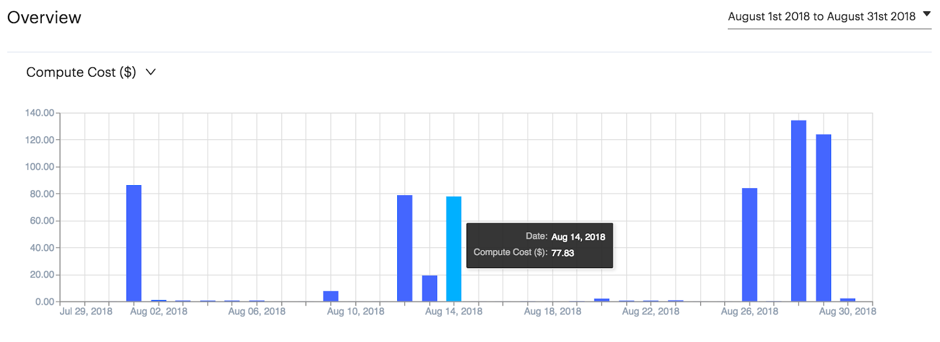Domino 3.0: New Features and User Experiences to Help the World Run on Models
Akansh Murthy2018-10-23 | 7 min read

This blog post introduces new Domino 3.0 features. Akansh Murthy is a Technical Product Manager at Domino and previously worked as a software engineer at Domino and Kareo.
Introduction
Domino 3.0 simplifies the life of a data scientist by eliminating model ops bottlenecks and accelerating research and productivity. As described at Rev, our data science leader summit last May, integrating data science into an organization requires a platform that not only supports the needs of data scientists, but also the needs of business stakeholders who use data scientists’ work and IT folks who support data scientists’ infrastructure.
To that end, we’re excited to release Domino 3.0!
This release includes two major new areas of functionality that address popular requests from our customers:
- easy ways to publish and discover data science “apps” (e.g. Shiny, Flask, Dash, etc.)
- tools for understanding compute usage across the workloads in a data science organization.
We’ve also revamped our UI to make navigation and search more efficient and expanded our platform APIs to make it easier to integrate Domino into proprietary workflows. Ultimately, these new functionalities move us closer to our broader vision of Model Management.
App Publishing and Launchpad
After many interviews with our data scientist users, we realized that they are forced to go through many internal hoops just to scale infrastructure for their work, elongating the time it takes to make their work visible and accessible for feedback.
With Domino 3.0, data scientists have full control when publishing their apps, without a need to involve IT and DevOps teams. Specifically, the new publishing flow enables customization of the hardware the app runs on to scale appropriately, depending on the resources it needs, the title and description, usage statistics of the app, and fine-grained permissions for who can view the app.

Once an app is published, it is viewable in the Launchpad, a portal where business stakeholders can discover and access your published apps. This allows fast delivery of apps to your stakeholders, resulting in rapid feedback.

We’ve built flexible permissioning, so you can control who’s allowed to access your app or whether it should be publicly available.
Domino also tracks how often your apps are being used and who’s using them. This lets you understand if your data science work is being used the way you expected and provides a way to show its impact within your organization.

We think Launchpad will be a game-changer in terms of making data science work visible to others in an organization, speeding up collaboration and model iteration.
Control Center
We also consistently heard that IT administrators and data science leaders wanted cost information at the level of granularity that would be useful for them to make decisions such as where to allocate more hardware and to see which projects were costing the most.
Based on this insight, we wanted to consolidate this information and make it easy to find and analyze; thus, the Control Center was born.
Control Center lets you understand compute spend and usage across your data science organization to inform smarter decisions about resource allocation and cost control.

This information can also be filtered by user, project or type of hardware to get much more granularity in distribution of cost.

To allow even more customization, we expose this data through an API designed to work with business intelligence tools, so users can integrate the data into existing workflows and dashboards. Now admins can analyze platform activity with fine-grained resolution, using tools like Tableau or even pulling the data back into Domino to be analyzed in Jupyter or displayed with Shiny.
This is just the beginning of the fascinating types of metadata Domino automatically captures, and we’re excited to continue working to expose more of it to help our users manage their data science organizations.
New user experience and user interface
We updated the look and feel of our UI to streamline workflows with a clean look that makes key product areas and tools much more visible to our data scientist users.
The new navigation is on the side instead of at the top, collapsible to allow more screen space which is precious to the data scientist, and it defines three distinct areas of Domino (Lab, Launchpad and Control Center). This allows different users to have their respective homes in the Domino product — data scientists in the Lab, model consumers in the Launchpad and IT admins in the Control Center.

We also redid our search UI, making search results accessible in the nav bar from any part of the product. The ability to find and reuse past work is so important to data scientists that we wanted to make it faster to find useful content without leaving your current context. Our search engine indexes files, comments, results and experiment metadata across all work in the platform.

We’re excited by the early reactions we’ve received and believe our redesign is a step in the direction of a smoother experience for our end users.
Public APIs
Recently, we have seen a trend toward customers building their own user interfaces that still want to interact with Domino. To facilitate API access to key Domino functionality, we have released a number of new APIs that can be consumed by customers or any interested developers. These APIs enable a whole ecosystem of new possibilities for Domino, and we plan to make more APIs publicly available. Check out our API docs for more info.
The future
By reducing model ops bottlenecks and improving productivity for the data scientist, making model products more visible to business stakeholders and exposing important compute spend data to the IT admins and data science leaders, Domino 3.0 makes for an end-to-end platform that helps organizations build a Model Management capability. In the coming months, we’ll release enhancements to the new features described above and deliver new capabilities for model monitoring and governance.
If you’re a data scientist or a data science leader building out your organization and any of this is interesting to you, check out a demo and chat with us. If you’re an engineer excited by tackling problems like these (and many more) check out our careers page. Here’s to making the world run on models!
Subscribe to the Domino Newsletter
Receive data science tips and tutorials from leading Data Science leaders, right to your inbox.
By submitting this form you agree to receive communications from Domino related to products and services in accordance with Domino's privacy policy and may opt-out at anytime.


